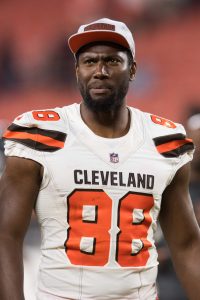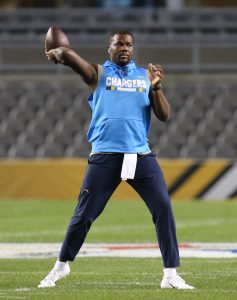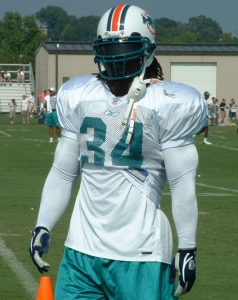Pro Football Rumors’ up-to-date list of 2019 NFL free agents is below. These are players who are eligible for restricted or unrestricted free agency after the 2018 season. The player’s 2019 age is in parentheses. Players are generally sorted by the position at which they played most in ’18, or the position at which their most recent team listed them.
Players who are currently on an NFL roster but don’t have a contract for 2019 are listed below, along with a few other notable free agents who aren’t on a roster at the moment.
Players eligible for restricted free agency are marked with (R), while franchise and transition players will be marked with (F) and (T) respectively. Exclusive rights free agents are not included. All other free agents are assumed to be unrestricted.
If you have any corrections or omissions, please contact us. For instant free agent updates, be sure to follow us on Twitter @pfrumors.
Updated 8-28-19 (1:03pm CT)
Quarterbacks
Matt Cassel (37)
Connor Cook (26)
David Fales (28)
Landry Jones (30)
Brock Osweiler (28)
Brandon Weeden (35)
Running Backs
Jay Ajayi (26)
Kapri Bibbs (26)
LeGarrette Blount (32)
Alex Collins (25)
Benny Cunningham (29)
D’Onta Foreman (23)
Jeremy Hill (26)
Chris Ivory (31)
Rob Kelley (27)
Daniel Lasco (26)
Stevan Ridley (30)
Robert Turbin (29)
Fozzy Whittaker (30)
Shaun Wilson (23)
Zach Zenner (28)
Fullbacks
Derrick Coleman (28)
Jalston Fowler (29)
Tre Madden (26)
Wide Receivers
Kelvin Benjamin (28)
Dez Bryant (30)
Martavis Bryant (27)
Leonte Carroo (25)
Sammie Coates (26)
Bruce Ellington (28)
Pierre Garcon (33)
Rashad Greene (26)
Maurice Harris (26)
Darrius Heyward-Bey (32)
Andre Holmes (31)
Justin Hunter (28)
Brandon LaFell (31)
Roger Lewis (25)
Ricardo Louis (25)
Brandon Marshall (35)
Rod Streater (31)
Mike Wallace (33)
Kevin White (27)
Nick Williams (28)
Terrance Williams (30)
Read more






